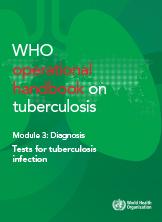Module 3: Tests for tuberculosis infection

 Feedback
Feedback
When preparing a budget for PMTPT, for example as part of a National Strategic Plan, it is important to conduct systematic costing. The TB module of the integrated health tool for planning and costing is designed to support national strategic health planning over the medium term (1). The WHO costing guidelines for tuberculosis interventions explain how to cost TB interventions from the perspective of the providers of health services and include tools for data collection (2). Listed below are key items that require costing when developing a budget for PMTPT.
Messages for ministries of health
Health-related quality of life is the perceived quality of a person’s daily life. It is an holistic way to quantify and measure illness-associated morbidity and the impact of health interventions. Examples of generic, non-disease-specific tools that can be used in young children, including those with TB, are EQ-5D-Y and TANDI (153, 154). EQ-5D-Y is a widely used self-report measure for children aged 8 years and over (155).
Although osteoarticular TB is uncommon (approximately 1–2% of all children with TB and 8% of children with EPTB), the potential long-term consequences of the disease, particularly in children, can be major (149).
Data from adults with TB show that a substantial proportion of people report residual symptoms, including cough and dyspnoea, despite microbiological cure at the end of TB treatment. This impacts on their quality of life and increases the risk of premature death (141–143). Previous PTB substantially increases the risk of recurrent TB, which may, at least in part, be due to residual lung damage (144, 145).
TBM is the most debilitating form of TB in children. It has high rates of neurological sequalae despite cure and disproportionately affects children aged under 5 years (4, 134). The pooled risk for neurological sequelae in children with TBM was approximately 50% in a systematic review of treatment outcomes, with more advanced clinical stage of disease at diagnosis (stages 2a/b and 3) associated with worse outcomes at the end of treatment (94).
Awareness of the consequences of TB disease in children and adolescents that go beyond survival and completion of treatment has increased (131, 132). Each child or adolescent on TB treatment should be assigned a mutually exclusive treatment outcome at the end of treatment, but follow-up and care may need to go beyond the conclusion of TB treatment (71).